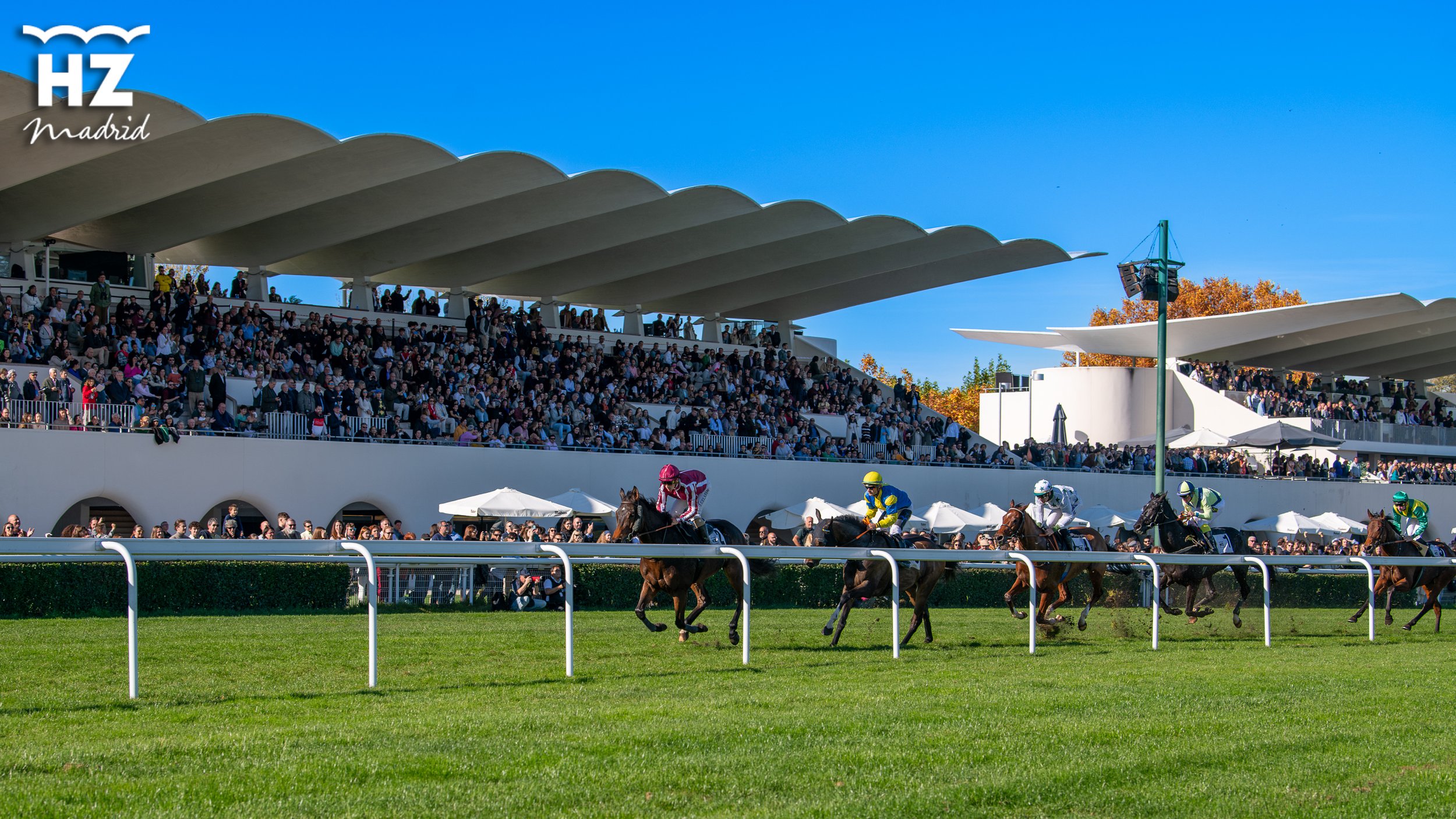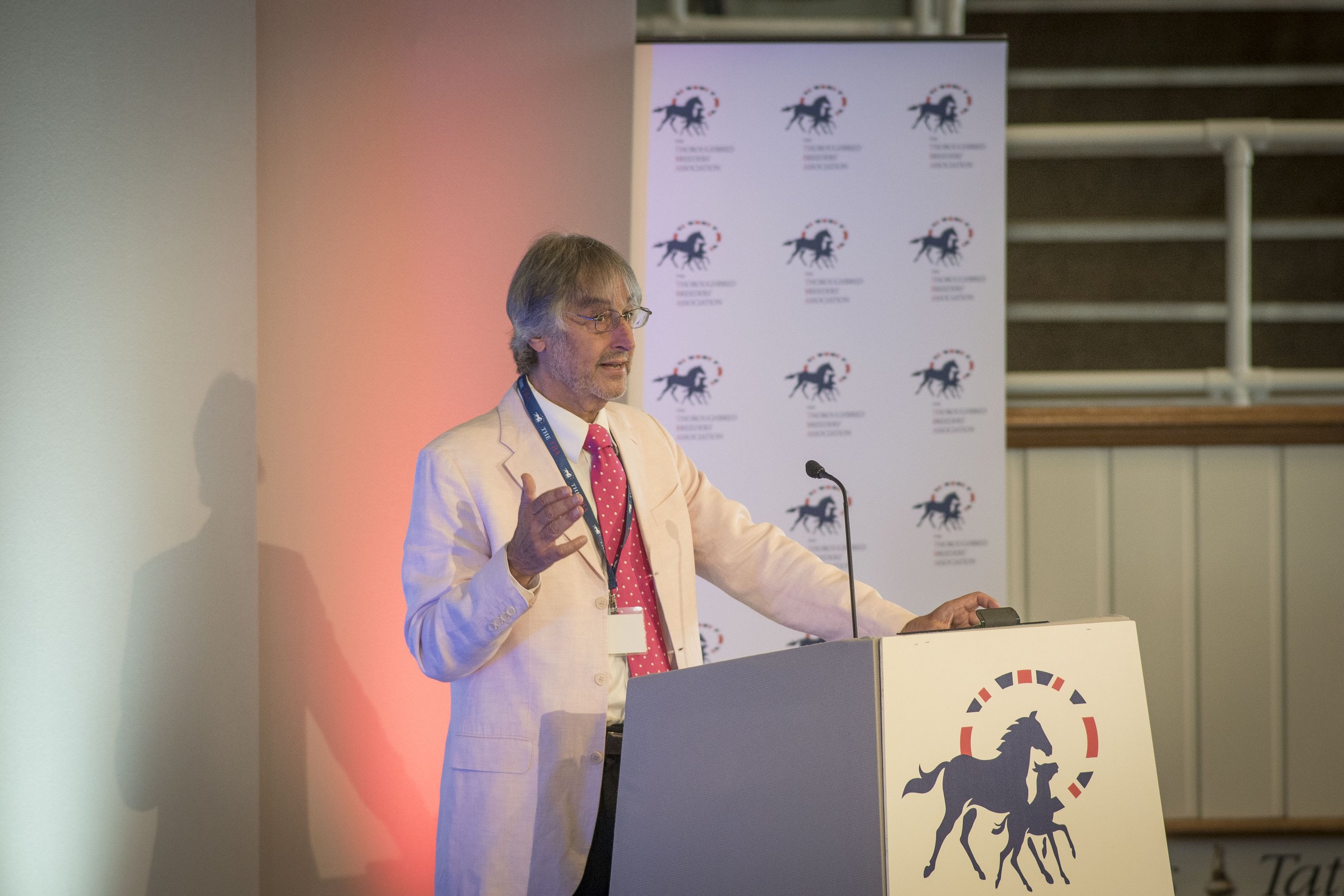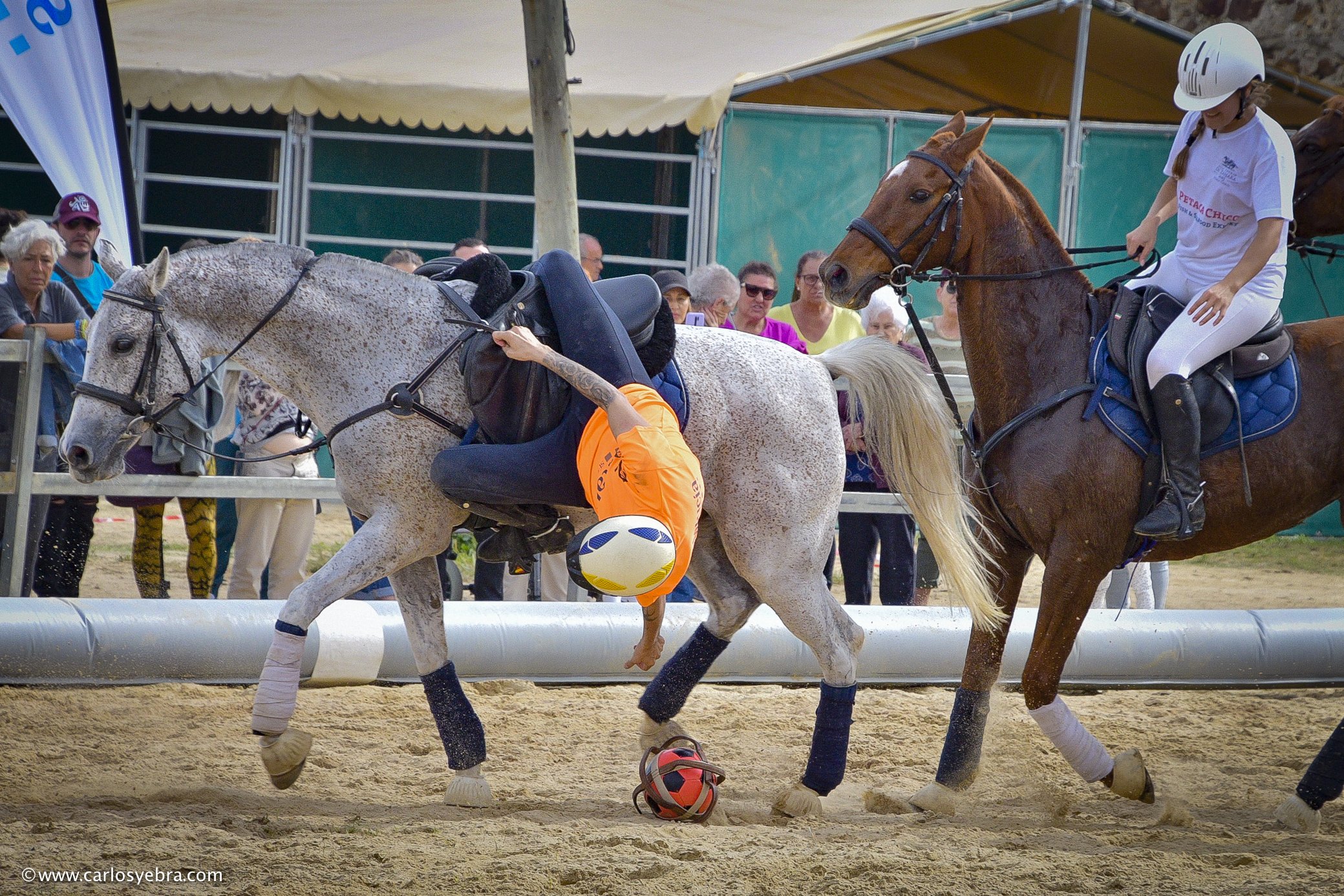Updates from the EMHF and we learn about Europe's latest beach racecourse - Zahara de los Atunes
Article by Paull Khan
The European and Mediterranean Horseracing Federation first started providing regular articles for European Trainer back in 2016. I thought, after eight years, it was time to have a look ‘under the bonnet’ of the federation, to see how it works.
EXECUTIVE COUNCIL MEETING, MADRID, SPAIN OCTOBER 14th
The Executive Council of the EMHF comprises nine members, elected by our General Assembly from among its members. The ‘ExCo’ sets the policy tone of the federation, agrees its budget and what the membership fees should be, etc. ExCo members elect, from amongst their own number, the EMHF’s Chair and its three Vice-Chairs.
Brian Kavanagh, now CEO of The Curragh Racecourse and formerly CEO of Horse Racing Ireland, has held the position of EMHF Chair since its inception, in 2010. Brian has indicated that he will stand down at the end of his current term, in mid-2025.
Your correspondent has served as the EMHF’s Secretary-General since 2012. There are no employees, although we do receive valuable help from Horse Racing Ireland, which provides resources for invoicing and handling the Federation’s finances.
Our Vice-Chairs are Rudiger Schmanns, Racing Director at Deutsche Galopp, representing EU countries, Julie Harrington, CEO at the British Horseracing Authority, representing non-EU European countries and Omar Skalli, serving for Mediterranean and Other countries. Rudiger and Omar are, like Brian, founding members of the ExCo.
The other members of the ExCo represent France (Henri Pouret), Poland (Jakub Kasprzak), Norway (Liv Kristiansen), Spain (Paulino Ojanguren Saez) and the Channel Islands, whose Jonathan Perree, in May, became the only person to be re-elected back on to the council, having also served between 2016 and 2019. Three countries – France, Great Britain and Ireland, enjoy automatic representation within ExCo. The other six ExCo places are filled by process of election.
ExCo deliberations span the full range of the responsibilities of our member Racing Authorities – governance, regulation, marketing, financial, legal, social, etc. Specific reports are received from the EMHF’s standing Political and Legislative Committee, together with the committees which sit within the EMHF umbrella – the European Pattern Committee (EPC) and European Horserace Scientific Liaison Committee (EHSLC). The EMHF has also created two special interest associations, the European Beach Racing Association and the European Pony Racing Association.
Much of the Political and Legislative Committee’s work concerns keeping alert to forthcoming legislation, whether within the EU or elsewhere, which may have a bearing on racing. Very often, this centres on the potential unintended consequences of changes which are being suggested with the best intentions. For example, animal health and welfare laws which are drafted with farm animals in mind and are not suited to horses. It was in this context that the EMHF led a delegation to Brussels in the summer, to impress upon policy-makers a number of potential pitfalls in the European Commission’s review of Welfare in Transport.
The European Pattern Committee’s work is not limited to deciding which races across Europe qualify as Group 1, 2, 3 or Listed. The EPC is constantly alive to trends, identifying any areas where the quality of European racing may be under threat or in decline – staying races, perhaps - and agreeing race planning policy initiatives designed to address these by influencing, over time, the behaviour of owners, breeders or trainers.
Doping and medication control sit at the core of the EHSLC’s remit, whether in the detection of substances prohibited at all times, or in the regulation of those therapeutic substances which need to be controlled. Alongside this, increasingly being raised are matters relating to horse welfare more widely and on which a pan-European response and approach is sought. The Chief Veterinary Officers of the major European Racing Authorities sit on the EHSLC and therefore steps are being taken to expand its brief to cover such issues.
At our most recent ExCo Meeting, which took place on October 14th in Madrid, we received a presentation on the report recently published by Horse Racing Ireland, in conjunction with Deloitte, ‘Social and Economic Impact on Irish Breeding and Racing, 2023’. As its title implied, this study took a broader view than the previous HRI/Deloitte report had done – not simply looking at economic factors, but also identifying the considerable and varied social benefits that racing brings, especially to those living in rural areas. This message had resonated strongly in Irish political circles and it was felt that this approach could profitably be replicated by other countries.
At each meeting, the ExCo agrees the shape of the EMHF’s educational programme over the coming twelve months. Last year featured two very successful events: an inaugural EuroMed Stewards’ Conference, hosted by the British Horseracing Authority, and a seminar on Racecourse Surface Management hosted by France Galop. It was decided to repeat the former in Copenhagen in June, where we will be holding our 2024 General Assembly, and to hold a seminar on Starting and Judging Procedures, led by the Irish Horseracing Regulatory Board.
The ExCo also seeks to identify which of the pressing issues facing racing could most usefully be focused on at our General Assembly. It was agreed that this year there should be sessions devoted to climate change and sustainability in relation to our sector, as well as the growing threat of illegal betting.
After the business was over, ExCo members were treated to a day’s racing at Spain’s premier track. La Zarzuela impressed on many levels. The luxuriant grass of the turf track belied the drought that had afflicted the region in recent months. The architecture of the gleaming white grandstand is striking, with its arched windows and billowing roof. The demographic was family-orientated, with little peacockery on show. Trees are plentiful, and the footprint of the track is such that there is space for a decent-sized crowd to spread out in the varied outdoor areas provided. And the top floor of the grandstand is now home to a series of airy hospitality areas, with comfy seating and a vibe which is less like a typical racecourse box and more akin to a chilled roof-top bar. All in all, a more than agreeable racing experience.
EUROPE’S YOUNGEST BEACH RACECOURSE: ZAHARA DE LOS ATUNES
The ExCo also receives reports from its two special interest associations, the European Pony Racing Association and the European Beach Racing Association (EBRA). But the latter’s annual meeting was held a couple of weeks after the ExCo – hence this separate bulletin.
The clue is in the name – Zahara de los Atunes is a small town dominated by a large fish! On hiring a car at Malaga airport, en route to this year’s annual EBRA meeting, the woman sorting the paperwork exclaimed jealousy: ‘Oh, you’re going to Zahara. You MUST try the red tuna!’.
‘Red tuna’ in this instance refers, somewhat confusingly, to the Atlantic Bluefin tuna – a prized goliath of the sea, averaging around 6.5 feet/2 metres in length and 550lbs / 250kgs in weight, whose lifespan, at 40 years, is greater than that of a racehorse. Born in the Mediterranean, they then venture out into the broad expanses of the Atlantic, before returning to breed. And, just as they sweep, as they must, through the narrow gap between ocean and sea - the Straits of Gibraltar – there, waiting for them, are the good fishermen of Zahara. They still employ the ancient and more eco-friendly ‘almadraba’ fishing technique, involving a complicated sequence of nets, strategically positioned, the gauge of which allows the younger fish to proceed, whilst trapping those of a certain size and maturity.
The influence and importance of the tuna to the town is all-pervasive. But, for one weekend of the year – the last weekend in October – the focus now moves from fish to thoroughbred. Because the vast strand which stretches both to the north and the south of the resort then becomes home to Europe’s newest official Beach Racecourse and to the staging of the Gran Premio de Zahara.
This is still a very young tradition, with nothing like the rich history of Zahara’s celebrated beach racing neighbour, Sanlúcar de Barrameda, which sits just 100 kms north up the Costa de la Luz, the other side of Cadiz. Sanlucar, which stages six days of racing and partying in the high summer, and which hosted the EBRA in 2019, is approaching its 180th anniversary, no less.
That year – 2019 – Zahara dipped its toe into the sea of beach racing, holding some unofficial exhibition races. But then COVID struck and three years passed before the first official races, (for thoroughbreds and held under the auspices of the Spanish Jockey Club), were run at Zahara. So, 2023 was, to all intents and purposes, ‘Year 2’ in an initiative – sponsored in part by Andalucia Tourism - designed to extend the tourist season, from its previous closure in early-October, for a few more precious and profitable weeks.
Progress over just these two years has been remarkable and testimony to its creator and driving force Pio Gonzales. It already has the feel of an embedded community event. Some 4,500 spectators lined the temporary barriers to watch the races, which were both live-streamed and covered by local television. “Beach Racing has been central to our success in keeping Zahara open for business for longer”, explains Gaspar Castro Valencia, Chair of the Zahara Beach Races Association. “We have just 1,300 inhabitants, but this year there were still 12,200 people here for the Gran Premio de Zahara weekend when, previously, the hotels and restaurants would have been closed. It has been an economic engine for the region. The presence of the European Beach Racing Association further helped to position Zahara, and Andalucia more widely, as an international tourist destination.”
The three thoroughbred races were interspersed with exhibition races, including one pony race for children, featuring a staggered starting-point based on the rider’s age. Two of the main races were over 1500m /7.5f, and the Gran Premio itself over 2000m /10f. Zahara is therefore noteworthy, among the world’s racecourses, in boasting - with Newmarket’s Rowley Mile – a straight 2000m / 10 furlongs! Starter numbers were modest, but included participants bred in France, Great Britain, Ireland and USA. The Gran Premio had the distinction of including Legionario (GB), a Listed Race winner in France the previous year, trained by the Duke of Alburquerque and coming to the sands off the back of a run in a €135K race at Meydan. The intention was to use Zahara as a stepping stone to the International races in Morocco the following month but, sadly, Legionario failed to fire in the race and the plan was abandoned.
Zahara – recently awarded the accolade as one of the ‘Magical Villages of Spain’ - was certainly a hit with the EBRA delegates. Apart from the tuna and the fish restaurants that abound, the village is famed for its live music, and the festival weekend has cleverly brought the jazz and racing worlds together. The Jazzahara Music Festival took place in an atmospheric al fresco setting, surrounded by the towering ancient walls of the Palacio de Pilas, former residence of the Dukes of Medina Sidonia which doubled up as a defence against pirates and a place in which to store the nets of the almadraba. And if your view of tuna is (as was mine) sullied by the canned variety, the Zaharan version is a culinary revelation! The number of different, sumptuous ways in which the fish was presented in the hospitality tents during racing was something to experience.
The additional equestrian attraction of a horse-ball tournament completed the entertainment. Horse-ball requires - of both the horses and their riders - extraordinary agility, and the Thoroughbred has proven wonderfully adept. Many of the horses on show were ex-racehorses, enjoying a second career.
The EBRA meeting received a presentation from Stefan Gast, creator of the vision of Pegasus Land - an ambitious new high-end, equine-focused development in Portugal. Part of that vision is to establish Beach Racing on the expansive and fashionable Comparta Beach, just south of Lisbon and the EBRA stands ready to give advice and share its members’ experiences and expertise.
It is to be hoped that Portugal will embrace the initiative. After all, in neighbouring Spain, Sanlucar and Zahara provide compelling evidence of beach racing’s enormous potential to enhance a coastal area’s touristic appeal and boost the local economy.
Look out for the dates of the 2024 European Beach Racing Fixture List, which will be displayed, when decided, at www.euromedracing.eu/beach-racing. Pop them in your diaries for a holiday or weekend away.
New Spanish beach race festival unveiled at meeting in Germany
Article by Paull Khan
There will be a spanking new venue for official beach racing in Spain this year when the Andalucian village of Zahara de los Atunes opens its doors to thoroughbred racing on Saturday October 29th, the middle day of an attraction-packed three-day beach festival, bookended by jazz concerts and polo. Long known for its beach-bar music scene, horseracing will now be used in Zahara in an attempt to prolong the tourist season in this southernmost part of Spain until the end of October.
The Costa de la Luz now boasts two beach tracks, with the venerable Sanlucar de Barrameda an hour-and-a-half drive up the coast.
Zahara’s stunning straight beach will accommodate races between 1400m/7f and 1800m/9f.
Plans for the Zahara festival were unveiled at this year’s annual meeting of the European Beach Racing Association, which took place in Cuxhaven, on Germany’s north seacoast. Delegates had been privileged to witness the famed Duhner-Wattrennen races, which have been staged on the vast beach for the past 120 years. An attentive and happy-paying crowd of 13,000 attended this year’s renewal, despite poor weather. The programme was varied, with trotting (mounted and sulky) and gallop races for warmbloods in addition to thoroughbred racing.
Cuxhaven is unique among beach racetracks in that the horses race through a shallow covering of standing water. The resultant spray, from the horses’ hooves and the wheels of the patrol vehicle, creates its own spectacle. The races are recognised as a powerful tourist attraction—a national minister attended and addressed the launch party before proceedings began.










